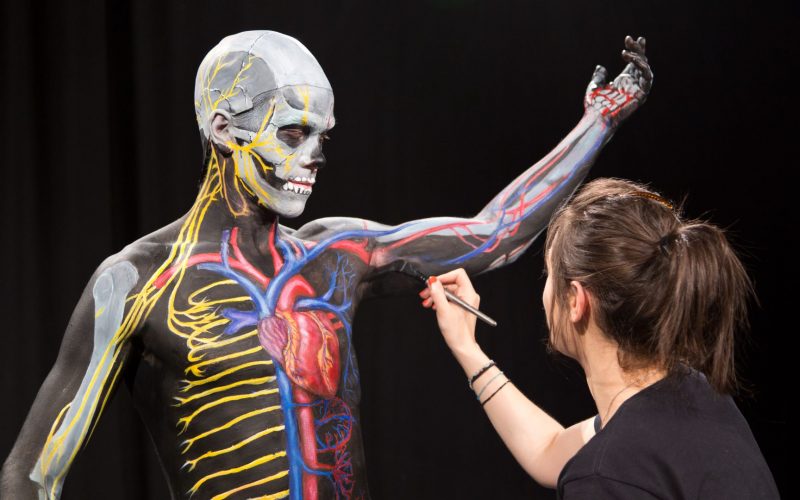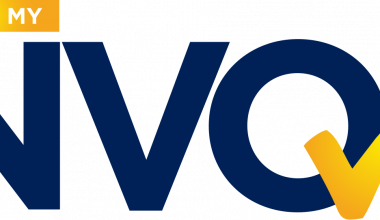Anatomy is very tough but with the suitable means, determination, and knowledge on “how to study anatomy,” you can get a good grade. Anatomy is the fascinating branch of science that answers all these questions and exposes the fundamental bricks of our bodies.
If you are a medical student, a healthcare student, or want to learn details of the human body, this article will give deep insight into studying anatomy. All you need to get the most out of anatomy studies is to follow the suggestions and guidelines in the writing closely.
This write-up will give you tips on not only how to study Anatomy and achieve Excellent Results but also how to achieve a complete understanding of human structure and how it works.
Table of contents
Importance of Anatomy as a Subject
Anatomy is a foundational subject in medical and healthcare sciences crucial in understanding the human body’s structure and function. It is a fundamental building block for various healthcare professions, including medicine, nursing, physical therapy, and surgery. Here are some key reasons highlighting the importance of studying anatomy:
- Clinical Practice: Anatomy provides the anatomical knowledge necessary for healthcare professionals to diagnose and treat patients. It helps understand the relationships between different organs, tissues, and systems, enabling accurate assessments and effective interventions.
- Surgical Proficiency: Surgeons rely on a deep understanding of anatomy to perform surgical procedures safely and efficiently. Knowledge of anatomical structures, such as nerves, blood vessels, and organs, is crucial for minimizing risks during surgical interventions.
- Medical Imaging: Anatomy forms the basis of medical imaging techniques such as X-rays, CT scans, and MRIs. Interpreting these images requires a solid understanding of anatomical structures to identify abnormalities, tumors, fractures, and other conditions.
- Research and Innovation: Anatomy provides the foundation for research in various fields, including medical advancements, bioengineering, and pharmaceutical development. Understanding the structure and function of the human body allows scientists to explore new treatments, develop medical devices, and improve healthcare outcomes.
- Patient Communication: Knowledge of anatomy enhances communication between healthcare professionals and patients. Explaining medical conditions, treatment options, and potential outcomes clearly and concisely builds trust and empowers patients to make informed decisions about their healthcare.
- Holistic Understanding: Studying anatomy helps healthcare professionals develop a holistic understanding of the human body. By appreciating the interconnections between systems and organs, professionals can approach patient care comprehensively, considering physical and physiological factors.
Read also: How to Get an A in A-Level Biology
Challenges of Studying Anatomy and Achieving Excellent Results
While studying anatomy can be rewarding, it also presents several challenges students may encounter. Overcoming these challenges is crucial to achieving excellent results. Here are some common difficulties faced by students studying anatomy:
- Vast Amount of Information: Anatomy encompasses an enormous amount of information, including complex anatomical structures, physiological processes, and medical terminology. Mastering this extensive knowledge requires dedication, organization, and effective study strategies.
- Complex Concepts: Anatomy involves understanding intricate relationships between anatomical structures, such as muscles, bones, nerves, and blood vessels. Grasping these complex concepts and their spatial orientations can be challenging.
- Memorization: Anatomy often requires memorizing many anatomical names, terms, and details. Remembering these details and recalling them accurately during exams can be demanding.
- Three-Dimensional Visualization: Anatomy is a three-dimensional subject, and visualizing anatomical structures in three dimensions can be difficult for some students. Developing spatial awareness and mentally rotating structures can take time and practice.
- Limited Time for Dissection: Practical anatomy sessions, including cadaver dissections, may have time limitations, making it challenging to explore and understand anatomical structures thoroughly.
- Integration with Clinical Knowledge: Anatomy is best understood in the context of clinical scenarios and applications. Connecting anatomical knowledge to clinical practice can be challenging, especially for students in their early education stages.
Overcoming these challenges requires dedication, effective study techniques, and seeking assistance. The following sections of this article will provide valuable insights into how to study anatomy effectively and achieve excellent results.
Also read: Seneca Learning Review –How to study with Seneca Learning
How to Study Anatomy Effectively
Here are tips on how to study Anatomy if you must come out with good results:
1. Set Study Goals and Objectives
Determine what you aim to achieve in your anatomy studies. Are you preparing for an exam, aiming to deepen your understanding, or pursuing a healthcare profession? Clearly define your goals to guide your study plan.
Then, divide your overarching goals into smaller, manageable objectives. For example, to understand the musculoskeletal system, you can set objectives to learn the bones, muscles, and their functions individually.
Set deadlines for each objective to stay focused and track your progress. Consider the duration of your study period and allocate sufficient time to cover all topics effectively.
2. Break Down the Syllabus into Subtopics
Anatomy is a vast subject, covering numerous body systems, organs, and structures. To make it more manageable, break down the material into subtopics. Focus on one area at a time, such as the skeletal, muscular, or nervous systems. This approach allows for a more in-depth understanding of each area before moving on to the next. Here is what to do:
- Review the Syllabus: Familiarize yourself with the anatomy syllabus or curriculum. Understand the key topics and subtopics that need to be covered.
- Divide the Syllabus: Break down the syllabus into smaller sections or chapters. Consider the logical flow of topics and group them accordingly.
- Assign Study Sessions: Assign specific study sessions to each section. Determine the time you’ll dedicate to each topic based on its complexity and importance.
- Create Study Materials: Develop study materials for each section, such as notes, flashcards, or concept maps. These materials will serve as valuable resources during your study sessions.
- Practice and Application: Incorporate practice questions, quizzes, and problem-solving exercises into your study plan. Applying your knowledge through practice enhances understanding and prepares you for exams.
3. Utilize Visual Aids
Visual aids such as diagrams, charts, and models are beneficial for studying anatomy. They visually represent the studied structures, making it easier to comprehend and remember. Use textbooks with detailed illustrations or explore online resources that offer interactive visualizations to enhance your learning experience.
4. Engage in Active Learning
Passively reading textbooks or notes may not be sufficient for mastering anatomy. Engage in active learning techniques that involve hands-on activities. For example, participate in laboratory sessions to examine real anatomical specimens or use virtual dissection tools. Actively engaging with the material helps reinforce your understanding and improves retention.
5. Form Study Groups
Collaborating with fellow students can be highly beneficial when studying anatomy. Form study groups where you can discuss complex topics, ask questions, and teach each other. Explaining concepts to others solidifies your understanding and exposes you to different perspectives and approaches.
6. Use Mnemonic Devices
Anatomy involves memorizing important information, including complex names and relationships. Mnemonic devices can aid in retaining this information. Create acronyms, rhymes, or visual associations to help you remember anatomical terms, structures, and their functions.
7. Test Yourself Regularly
Regular self-assessment is crucial for tracking your progress and identifying areas that require further review. Utilize flashcards, online quizzes, or practice exams to test your knowledge. Self-testing enhances retention and helps you become familiar with the questions you may encounter in exams.
8. Seek Clarification and Assistance
Do not hesitate to seek clarification or assistance when encountering difficulties in your anatomy studies. Consult your professors, teaching assistants, or fellow students for help. Additionally, use online forums, educational websites, or professional anatomy resources for further clarification and supplementary materials.
9. Apply Anatomy to Real-Life Scenarios
To deepen your understanding of anatomy, connect it to real-life scenarios. For example, when studying the cardiovascular system, relate it to common medical conditions such as heart disease or hypertension. Understanding how anatomical concepts apply to clinical situations improves your critical thinking skills and helps you appreciate the relevance of anatomy in healthcare practice.
10. Utilizing Study Resources
To enhance your anatomy studies and achieve excellent results, it’s essential to utilize various study resources. Here are some recommended resources that can support your learning journey:
Recommended Anatomy Textbooks and Atlases
- “Gray’s Anatomy for Students” by Richard Drake, A. Wayne Vogl, and Adam W. M. Mitchell: This textbook provides a comprehensive and student-friendly approach to studying anatomy, with detailed illustrations and clinical correlations.
- “Clinically Oriented Anatomy” by Keith L. Moore, Arthur F. Dalley II, and Anne M. R. Agur is a textbook known for its clinical focus, integrating anatomical knowledge with clinical applications.
- “Atlas of Human Anatomy” by Frank H. Netter: Widely regarded as a gold standard for anatomical illustrations, this atlas features detailed and accurate drawings that help visualize anatomical structures.
- “Rohen’s Color Atlas of Anatomy” by Johannes W. Rohen, Chihiro Yokochi, and Elke Lütjen-Drecoll offers a unique perspective. It features actual cadaveric dissections and color-coded illustrations to provide a comprehensive understanding of anatomy.
Read Also: How To Study ASVAB In Less Time | 2024 Timetable, Schedules
Online Anatomy Resources and Interactive Tools
- Kenhub (kenhub.com): Kenhub is an online platform offering various anatomy resources, including interactive quizzes, video tutorials, and anatomical atlases. It is highly recommended for its detailed and comprehensive content.
- TeachMeAnatomy (teachmeanatomy.info): TeachMeAnatomy is a website that provides in-depth anatomy tutorials, revision notes, and clinical case studies. It offers a clear and concise explanation of complex anatomical concepts.
- Visible Body (visiblebody.com): Visible Body offers interactive 3D models and animations that allow you to explore the human body in detail. It provides an immersive learning experience and helps in visualizing complex anatomical structures.
- AnatomyZone (anatomyzone.com): AnatomyZone offers various anatomy video tutorials covering various body systems. The videos provide clear explanations and demonstrations of anatomical structures and functions.
Anatomy Video Tutorials and Online Courses
- Complete Anatomy (3d4medical.com): Complete Anatomy is a comprehensive anatomy platform offering 3D interactive atlas, guided video tutorials, and quizzes. It provides a detailed understanding of the human body and its systems.
- Coursera (coursera.org): Coursera offers online anatomy courses from renowned universities and institutions. These courses cover various topics, including human anatomy, histology, and clinical anatomy.
- YouTube (youtube.com) hosts a wealth of anatomy-related video tutorials, lectures, and dissection demonstrations. Channels such as AnatomyZone, Armando Hasudungan, and Interactive Biology offer valuable resources for anatomy studies.
12. Creating a Study Timetable
To achieve this, follow the steps below:
- Assess Your Available Time: Determine how much time you can dedicate to studying anatomy each week. Consider other commitments, such as classes, work, and personal activities, and allocate realistic study hours accordingly.
- Divide Your Study Time: Divide your study time into smaller focused work sessions. Research suggests that shorter study periods with breaks between are more effective for retention and concentration.
- Prioritize Difficult Topics: Identify the topics or areas that you find most challenging and allocate dedicated study time for them. Addressing complex subjects early on will allow you to seek clarification and practice more if needed.
- Balance Topics: Ensure a balanced distribution of topics throughout your study timetable. Cover different body systems and subtopics to maintain variety and avoid monotony.
- Review and Revision: Allocate regular time slots for review and revision. Regularly revisit previously studied material to reinforce your understanding and retain information in the long term.
Read Also: How to Study Korean From Scratch in Less Time | Courses Online 2024
Frequently Asked Questions (FAQs)
Anatomy can be challenging due to its vast information and complex concepts. However, it can be mastered effectively with the right study strategies and dedication.
Yes, there are numerous online resources available for studying anatomy. Websites like Kenhub, TeachMeAnatomy, and Visible Body offer comprehensive anatomy tutorials, interactive tools, and quizzes to aid learning.
Visual aids, such as diagrams, charts, models, and virtual dissection tools, represent anatomical structures, making it easier to understand and remember complex concepts.
Mnemonic devices are memory aids that help in retaining information. They can be in the form of acronyms, rhymes, or visual associations. Mnemonics assist in remembering anatomical terms, structures, and functions.
Applying anatomy to real-life scenarios helps you understand its practical relevance. Relate anatomical concepts to common medical conditions or clinical situations to develop critical thinking skills.
Conclusion
Learning anatomy demands determination, the use of efficient tactics, and consistency of work. Implementing the tips and methods this article has outlined and weathering the storm will lead to outstanding academic achievements.
You should develop a study schedule, use visual aids, engage in active learning, organize study groups, and incorporate anatomy into real-life situations. Seek assistance when needed and frequently evaluate your knowledge by taking tests.
By being persistent and taking a systematic course, you will learn to decipher anatomical complexity and achieve the best in your academic or professional aspirations.
References
- Easy-anatomy.com-How to Study Anatomy
- Thefunkyprofessor.com-How to Study Anatomy
- Kenhub.com-How to Study Anatomy






